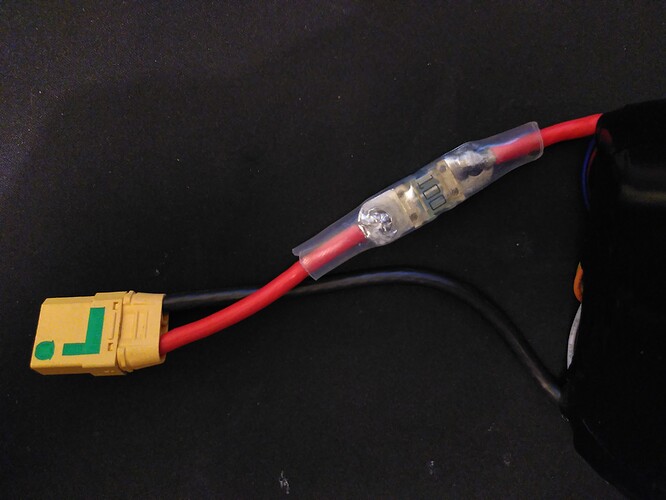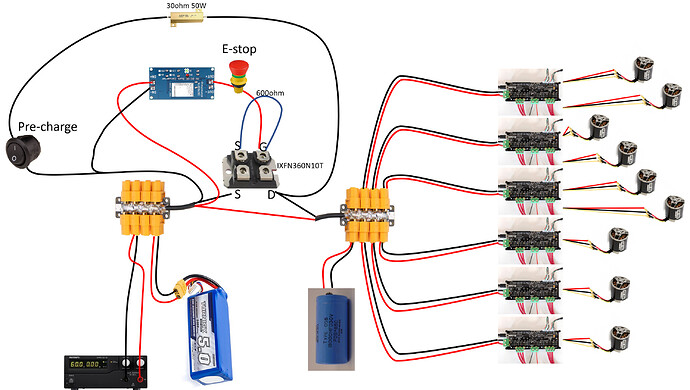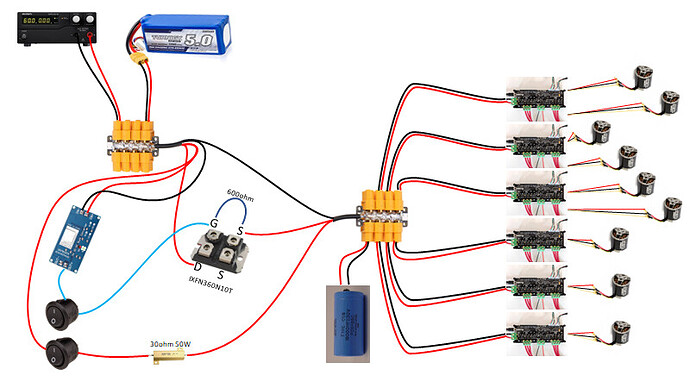Your e-stop button shorted out? 
That’s the one thing they should never do… They are normally forced contacts… But they are not meant for high currents, so it may have welded.
I would avoid driving a MOSFET with a switch. It can be done ofc, but you never want to leave the gate floating - it should be tied to 0V or VSS+9V at all times - That’s a N-channel mosfet, so it won’t work unless your dc-dc converter is isolated and is referenced from the positive side of the battery…
I’d recommend a relay contactor e.g. a KILOVAC, or else a “solid state contactor” which is just a MOSFET + driver circuit in an integrated opto-isolated package. You drive it as you would an LED.
But if it’s just a manual switch you need and not a real e-stop, then a battery isolator switch is a lot cheaper.
Yeah, inrush currents are to be avoided. They can damage the ODrive in extreme cases.
You could switch in a resistor across the relay as a simple manual pre-charge to avoid inrush - by the same token you could put the same resistor to GND when off to discharge your capacitor.
I have a 100A fuse permanently soldered in line with my battery which is enough to discharge it at 4C i.e. from 100% to 0 in 15 minutes flat. I can’t imagine needing to go higher than that, and in any case I am using a 90A xt90-s connector. For me, the anti-spark connector serves as a disconnect and a pre-charge.
I don’t have a machine big enough to need a “real” e-stop, but if I did, I would want one that disables the high-side drives on the ODrive without resetting the software, and lets it pull the low sides low to stop the motors immediately rather than letting them coast. It doesn’t exist yet for ODrive, but that’s what industrial drives do.
Speaking of machines big enough to need emergency stop buttons, what in Bob’s name are you doing that needs 6 ODrives and lots of power? 


 but I abandoned that approach and used proper gate drive ICs for all my mosfets after that.
but I abandoned that approach and used proper gate drive ICs for all my mosfets after that. 



